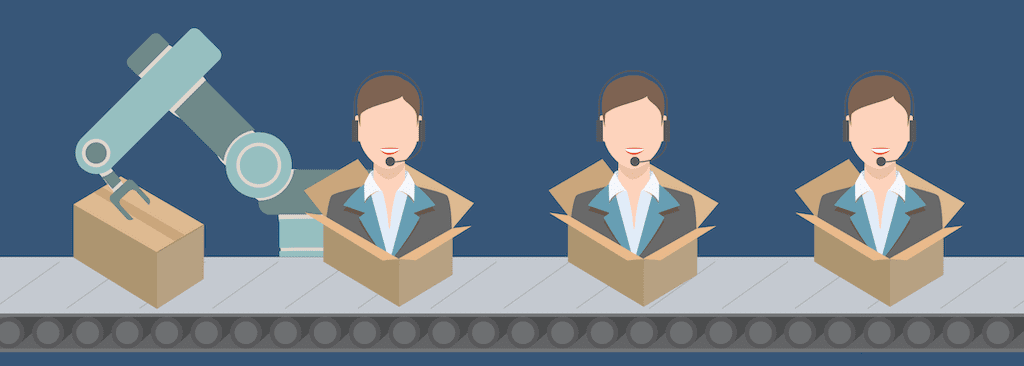Cost Reduction in the Time of Great Customer Service and Customer Experience
A Customer case study of the online support experiences of 1000 UK adults revealed that 40% couldn’t get online answers to even the simplest questions. 100% of the respondents preferred to interact with a human being face-to-face.
However, Chatbots came a close second where 85% of the respondents saw that as a blend of convenience and immediacy.
This was followed by Email, Online chat, Telephone, Website, and Social Media.
According to a poll conducted recently by Harris Poll, an insights and analytics company revealed:
- Eight in ten Americans (79%) agree that talking to bots is a waste of their time
- The majority of Americans (93%) agree that they value a company who staffs their customer support with people instead of bots
- Nearly nine in ten Americans (88%) agree that their customer service experience is better because they engage with a live person instead of a bot
What Does This Data Reveal?
It reveals that people still prefer to talk to human beings and live agents as opposed to the latest technology and multiple channels. So, it means that organizations will have to recruit more and more support personnel in order to provide better customer service and customer experience.
What Happens to All the Technology Investments?
In the past decade or so, organizations have committed and spent a lot on technology like online support, online chat, support bots that mimic human interactions, social media channels and website self-service options.
All of these were done thinking that it would reduce their costs drastically.
While the preferred route for customers is either an interaction with a human being or a live chat, you cannot completely discount the other channels and technology investments. Each of them is being successfully utilized by organizations the world over for specific use cases.
Let Us Look at Some of Those Use Cases:
1. Online Support
Amazon has successfully automated simple requests like product returns. Here, the customer experience is absolutely not compromised and they get to see everything related to their order from the date of delivery to invoice to product returns
2. Chatbots
Bank of America introduced a Chatbot called Erica, using which their customers can access and ask for account balance, bank statements, transfer funds, create a deposit, saving and investment advice, and so on.
3. Website Self-Service
HubSpot does this through their HubSpot Academy courses and certification programs. These free trainings are offered as video recordings that are posted onto the HubSpot Academy homepage. HubSpot users can watch these videos and complete the tasks associated with them to become more familiar with HubSpot’s products and marketing ideology.
4. Social Media
Nike has one of the strongest customer service accounts on Twitter. They feature a dedicated Twitter account, Team Nike, which provides support 7 days a week and in seven languages (English, Spanish, French, Dutch, Italian, German & Japanese). When a customer mentions Nike’s main twitter handle, @teamnike jumps into help.
There are a number of companies that are utilizing technology very effectively for their customer support initiatives across verticals. We have only covered one example for each of the technology or the channels.
Now, What Does This Mean to Customer Service and Customer Experience?
Well… there has to be a balance between providing customers access to live agents and human beings and providing convenience to customers through other technology channels.
How Do You Achieve Balance Between Human Support & Technology?
Identify your customer service priorities.
Priority 1
- Account-related and technical queries
- User complaints
- Requests that are showstoppers
- Issues that affect a bunch of users
Priority 2
- Thanking those who left a feedback or review of your product/service
- Responding to general references about your product/service and the comments made by people
You can send proactive messages for release of patches and upgrades. You can offer different channels like chatbots and emails for resolving complaints and have a customer support representative talk to address requests that are showstoppers
How Complex Is Your Offering?
Let us assume that you are selling something similar to HubSpot or a CRM software or an ERP or for that matter a contact center suite. It makes sense to have video training materials that your users can go through and understand how to use each of the features and functionality of your software.
This would be more a self-service feature that they can use and over and above that, they can look at other channels for their requests
How Are You Staffing Your Customer Service?
This is the most complex part of any customer service process. Customers expect immediacy when it comes to service requests. Assume that you have multiple channels – telephone, email, chatbot, online support, online chat, website self-service, and social media, you need to have the personnel to support all of these channels.
Some organizations are social-friendly, some are phone-friendly, some are online-support friendly and some others are website-friendly. You would have to look at the amount of traffic that you are getting in each of these channels and accordingly staff your customer service and experience function.
Though the preferred channel for your customers is face-to-face human interaction and live phone support, it is imperative for you to provide multiple channels for your customers to reach you. In addition, they all have to function together for you to achieve the desired customer expectation levels.
All the mentioned channels are playing a huge role in the lives of customers otherwise. It is only natural that it finds its way into customer service and customer support functions. It is predicted by Gartner that 85% of customer service and support would move towards unmanned technology.
